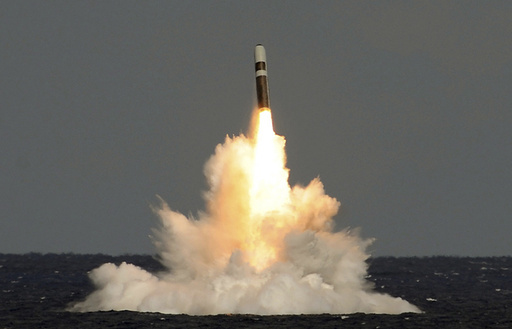LONDON (AP) — British lawmakers are seeking reassurances about the nation’s nuclear deterrent after reports that a test of the system failed dramatically last month when an unarmed missile crashed into the sea near the submarine from which it was launched.
The Sun newspaper reported on Tuesday that the incident occurred while Defense Secretary Grant Shapps was on board the HMS Vanguard to witness the test firing of a Trident missile designed to carry nuclear warheads.
Shapps and the First Sea Lord Admiral Ben Key, the Royal Navy’s chief of staff, were taking part in what was the final exercise for the Vanguard after a refit that took more than seven years.
The Ministry of Defense confirmed that an “anomaly? occurred but said “the test reaffirmed the effectiveness of the U.K.’s nuclear deterrent.?
“As a matter of national security, we cannot provide further information on this, however, we are confident that the anomaly was event specific, and therefore there are no implications for the reliability of the wider Trident missile systems and stockpile,? the ministry said.
“The U.K.’s nuclear deterrent remains safe, secure and effective,” it added.
John Healey, the opposition Labour Party’s spokesman on defense issues, said reports of the test failure were “concerning.”
“The defense secretary will want to reassure Parliament that this test has no impact on the effectiveness of the U.K.’s deterrent operations,” he said.
The HMS Vanguard is one of the U.K.’s four Vanguard-class submarines, which provide Britain’s nuclear deterrent by ensuring that one of the vessels is constantly at sea. The nuclear-powered submarines carry Trident 2 D5 nuclear missiles, which are also used by the U.S. Navy.
The Trident, made by U.S.-based Lockheed Martin, is a ballistic missile that can be fired at targets up to 4,000 miles (about 6,437 kilometers) away. The missiles are ejected from the submarine by high-pressure gas before the solid-fuel motors ignite as they reach the surface of the water.
This website uses cookies so that we can provide you with the best user experience possible. Cookie information is stored in your browser and performs functions such as recognising you when you return to our website and helping our team to understand which sections of the website you find most interesting and useful.
